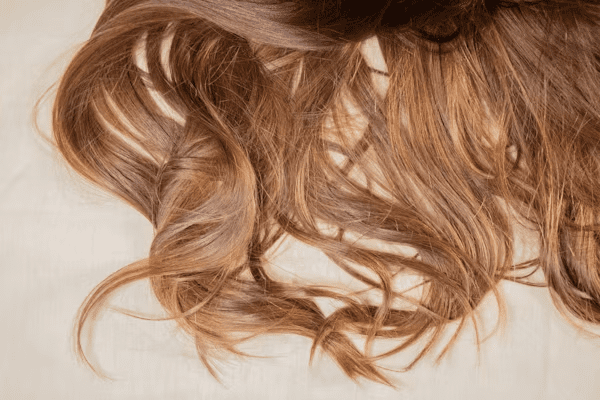
Contents
- 1 Understanding Female Hair Loss and Its Emotional Impact
- 2 Why FUE Is Becoming the Preferred Option
- 3 What to Expect from a Melbourne FUE Hair Transplant
- 4 Is FUE Right for Every Woman?
- 5 Supporting Treatments for Better Results
- 6 Choosing the Right Clinic in Melbourne
- 7 Post-Treatment Expectations
- 8 Final Thoughts
Understanding Female Hair Loss and Its Emotional Impact
Hair has long been tied to identity and confidence—especially for women. Thinning hair or bald patches can affect self-esteem and social interactions. While hair loss is often associated with men, it also significantly affects women. Fortunately, advances in treatment are making it easier to address the issue. One of the most promising options today is FUE hair transplant, and more women in Melbourne are opting for this method to restore hair and regain confidence.
Common Causes of Hair Loss in Women
Before exploring treatment, it’s important to understand what might be triggering hair loss. Common causes include:
- Genetic predisposition (female pattern baldness)
- Hormonal changes such as pregnancy, menopause, or thyroid issues
- Stress or illness, which may lead to temporary shedding (telogen effluvium)
- Medical treatments like chemotherapy
- Nutritional deficiencies, particularly iron and vitamin D
- Autoimmune disorders, including alopecia areata
Because female hair loss tends to be more diffuse compared to men, early detection and professional consultation are key.
Why FUE Is Becoming the Preferred Option
FUE, or Follicular Unit Extraction, is a minimally invasive surgical technique that involves removing individual hair follicles from a donor area (typically the back of the scalp) and implanting them into thinning or bald areas.
While this method was initially popular among men, the trend has shifted. Women are increasingly recognising its benefits as a long-term solution for hair loss.
Key Advantages of FUE for Women
Minimal Scarring
FUE doesn’t require large incisions, which makes it ideal for women who prefer to wear their hair long. The micro-punctures from follicle extraction heal quickly and leave little to no visible scarring.
Natural-Looking Results
The precision of FUE allows for strategic placement of hair follicles, creating a natural hairline and density that blends seamlessly with existing hair.
Faster Recovery
Most women return to regular activities within a few days. The healing process is quicker and more comfortable compared to older transplant methods.
No Need for a Shaved Head
Many Melbourne clinics now offer FUE procedures that do not require shaving large areas of the scalp—important for women concerned about visible changes during recovery.
What to Expect from a Melbourne FUE Hair Transplant
If you’re considering a Melbourne FUE hair transplant, the first step is a consultation at a qualified clinic. Here’s what the process typically involves:
The Consultation
During the initial appointment, the specialist will:
- Assess your scalp and hair density
- Discuss your medical history and potential causes of hair loss
- Explain treatment options tailored to your condition
- Set realistic expectations regarding results
Photos may be taken to help plan the procedure and track progress over time.
The Procedure
- Preparation
The donor and recipient areas are numbed with local anaesthesia to ensure comfort. - Follicle Extraction
Using a fine punch tool, the surgeon removes individual follicles from the donor site. - Implantation
The follicles are carefully placed into areas experiencing hair thinning or balding, following natural hair growth patterns. - Post-Procedure Care
A detailed care plan is provided, which includes washing instructions and how to avoid irritating the treated areas.
Is FUE Right for Every Woman?
While FUE is effective, it’s not suitable for all types of hair loss. The best candidates are women with:
- Stable hair loss patterns (not actively shedding large amounts)
- Adequate donor hair at the back or sides of the scalp
- Realistic expectations regarding density and coverage
Women experiencing widespread thinning might benefit from other female hair loss treatment options, such as PRP therapy, topical treatments, or low-level laser therapy.
Supporting Treatments for Better Results
Clinics often combine FUE with other supportive treatments to enhance outcomes:
PRP (Platelet-Rich Plasma)
PRP therapy uses your blood’s growth factors to strengthen existing hair follicles and improve graft survival after transplantation.
Topical Minoxidil
A commonly prescribed solution that can help prolong the hair growth cycle and maintain transplant results.
Nutritional and Hormonal Assessments
Addressing internal imbalances can help improve hair growth naturally, making external treatments more effective.
Choosing the Right Clinic in Melbourne
A successful Melbourne FUE hair transplant relies heavily on the experience and skills of the practitioner. When choosing a clinic, consider the following:
- Credentials and experience of the hair restoration team
- Before-and-after galleries showcasing previous female patients
- Transparent consultations with tailored treatment plans
- Comfortable facilities with follow-up support
Reading online reviews and checking for certifications from professional bodies can also help you find a reputable clinic.
Post-Treatment Expectations
Results from FUE take time. You may notice:
- Initial shedding of transplanted hairs (a normal part of the cycle)
- New growth beginning 3 to 4 months post-surgery
- Full results visible after 9 to 12 months
Patience is key, as the hair takes time to grow and settle.
Final Thoughts
Hair loss is a personal and often emotional journey. The good news is that advancements in technology now offer effective and discreet solutions for women. The Melbourne FUE hair transplant method continues to grow in popularity due to its natural results, minimal downtime, and long-term benefits.
Whether you’re in the early stages of thinning or have been struggling with it for years, seeking professional help for female hair loss treatment can be a life-changing step. With the right care and realistic expectations, you can regain not just your hair—but also your confidence.









